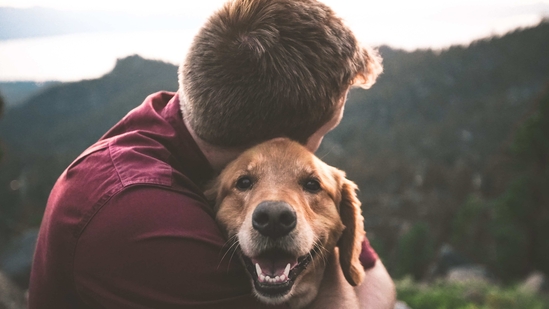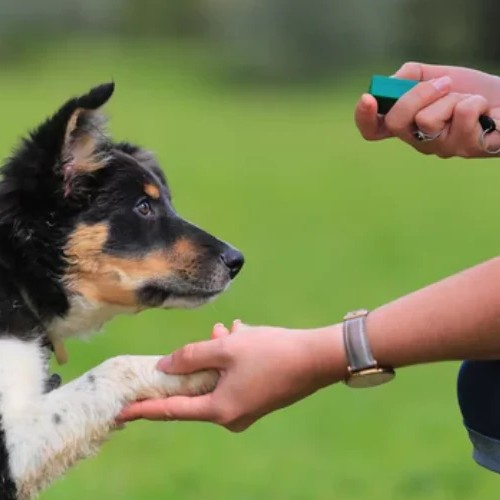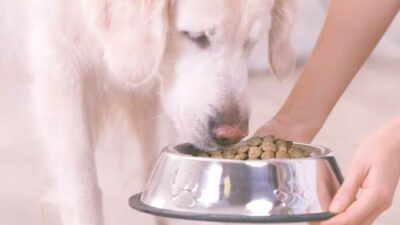Meta Title: Dog Training Made Easy | Essential Tips for Every Pet Owner 2025
Meta Description: Discover simple and effective methods for puppy and adult dog training using positive reinforcement, leash and house training, and socialization techniques in 2025.
Introduction
Training a dog can sometimes feel like a challenging task, especially if you’re a first-time pet owner. Issues like misbehavior, accidents inside the house, leash pulling, or difficulty with basic commands can create frustration and strain the connection with your furry companion. However, learning how to train your dog doesn’t have to be complicated or stressful.
This guide offers straightforward advice for both puppies and adult dogs using proven methods such as positive reinforcement and clicker training. Whether your goal is to teach simple commands, improve behavior, or handle house training, these essential tips will help you raise a well-mannered and happy pet.
Understanding dog behavior is key to effective training and a happy pet. By observing your dog’s actions and body language, you can better address their needs and improve communication, leading to a stronger bond and fewer behavioral problems.

Mastering essential dog commands is crucial for your pet’s safety and good behavior. Regular training using positive reinforcement helps your dog understand and respond reliably to commands like sit, stay, and come.
Understanding the Basics of Dog Training
Why Training Your Dog Matters
Training is vital for shaping your dog’s behavior, ensuring daily life is safe and enjoyable for both of you. Dogs that receive guidance early on tend to be more relaxed, better socialized, and easier to handle, which can prevent accidents and confusion.
Positive Reinforcement: A Proven Approach
Modern training techniques emphasize rewarding good behavior rather than punishing mistakes. Using treats, praise, or playtime encourages your dog to respond willingly and helps build a trusting relationship.
Puppy Training: Setting the Foundation
Start Early and Stay Consistent
Begin working with your puppy soon after bringing them home, typically around eight weeks old. Keep training sessions brief—between five and ten minutes—to match their attention span, and use the same commands and signals consistently.
House Training Essentials
Create a routine for bathroom breaks by taking your puppy outside regularly, especially after meals or naps. Celebrate their success with immediate praise and clean indoor accidents thoroughly to discourage repeat incidents.
Socialization is Key
Expose your young dog to various people, animals, noises, and places during the critical socialization window between three and fourteen weeks of age. This exposure builds confidence and helps reduce fear-based reactions later.
Basic Commands Every Dog Should Know
| Command | Purpose | Training Tip |
|---|---|---|
| Sit | Gets your dog’s attention calmly | Use a treat to lure them into a sitting position, then reward. |
| Stay | Keeps dog safely in place | Start with short durations and gradually increase. |
| Come | Recall for safety | Use a cheerful voice and reward immediately when they respond. |
| Leave It | Prevents picking up unwanted items | Reward the dog for ignoring the object. |
| Heel | Walk calmly beside you | Use treats and maintain a steady walking pace. |

Leash Training: Enjoying Walks Together
Walking your dog should be a relaxing activity for both of you rather than a struggle.
Tips for Successful Leash Training
- Choose an appropriate collar or harness based on your dog’s size and breed.
- Begin indoors or in a quiet spot to limit distractions.
- Reward your dog when they walk beside you without pulling.
- Pause walking if your dog pulls and only continue when the leash is slack.
- Be patient and consistent—it may take several weeks to develop good leash manners.
Crate Training: Creating a Comfortable Space
A crate can offer your dog a secure retreat and assist with potty training.
How to Use a Crate Effectively
- Make the crate inviting by placing toys and treats inside.
- Never use the crate as a punishment.
- Gradually increase the time your dog spends in it.
- Use the crate for naps and bedtime to help your dog feel secure.
Clicker Training: Communicating Clearly
Clicker training involves using a device that makes a distinct sound to mark positive behaviors, immediately followed by a reward.
Benefits Include:
- Clear and consistent communication with your dog.
- Faster learning by reinforcing specific actions.
- Useful for teaching advanced tricks or modifying problematic behaviors.
Addressing Common Behavioral Challenges
Barking
Find out what triggers the barking and work on reducing exposure or desensitizing your dog. Teach a “quiet” command using rewards to encourage calmness.
Chewing
Offer plenty of suitable chew toys and redirect your dog when they go after household items.
Jumping on People
Ignore jumping behavior and instead reward your dog when all four paws stay on the ground.
Separation Anxiety
Gradually increase the time your dog spends alone and consider puzzle toys or calming products recommended by veterinarians.
Socialization: Encouraging Confidence and Friendliness
Dogs that are well-socialized tend to be more relaxed around new people and animals.
Effective Socialization Strategies
- Arrange playdates with vaccinated dogs.
- Enroll your dog in puppy kindergarten or group training classes.
- Expose your dog to different environments, sounds, and social settings regularly.
Advanced Training and Polite Manners
After mastering the basics, focus on teaching your dog good manners such as:
- Waiting patiently for their food.
- Remaining calm amid distractions.
- Greeting visitors politely.

Real-World Success Story: Max’s Leash Training Journey
Max is a two-year-old Labrador who once pulled hard on every walk. By consistently using leash training techniques combined with positive rewards and patience, Max learned to walk calmly beside his owner. Within six weeks, walks became peaceful, enjoyable moments for both.
Helpful Resources
For further learning, check out:
- Positive Reinforcement in Dog Training
- American Veterinary Society of Animal Behavior
- American Kennel Club’s Crate Training Guide
Frequently Asked Questions (FAQ)
Q1: How long does it take to train a dog?
Training duration varies depending on breed, age, and consistency. Most basic commands can be learned within a few weeks with daily practice.
Q2: When should puppy training start?
Begin as early as eight weeks old, focusing on short sessions and early socialization.
Q3: How can I reduce excessive barking?
Identify the cause, teach commands like “quiet,” reward calmness, and avoid reinforcing barking with attention.
Q4: Can adult dogs learn new tricks?
Yes! Adult dogs are capable of learning, though patience and consistent practice are essential.
Q5: What’s the difference between crate training and confinement?
Crate training uses the crate as a positive safe space, while confinement often means isolating the dog. Proper crate training supports behavior and security.
Conclusion
Training your dog is achievable with the right approach and mindset. Whether you’re starting with a puppy or teaching an adult dog, using positive, consistent methods builds a strong bond and helps your pet grow into a happy, obedient companion.
Ready to simplify your training journey? Share your experiences or questions in the comments below, and subscribe to our newsletter for expert tips throughout 2025!



